Changing the future means learning from the past
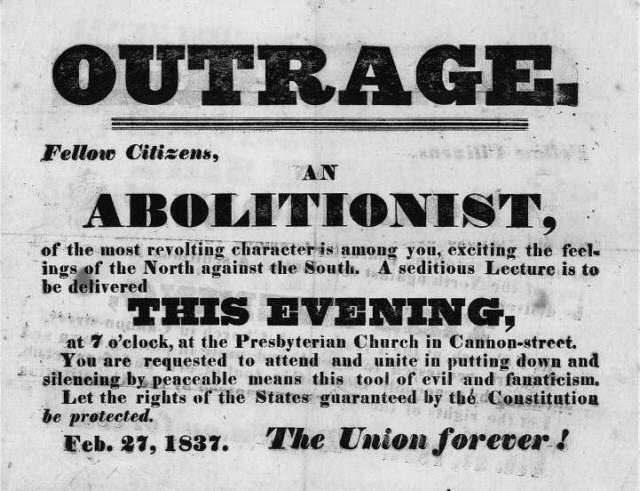 One of the most common of all sins among new activists is thinking they're inventing resistance for the first time. There's no faith like that of the newly converted and it's often easy to believe you are somewhere, doing something, no one has gone or done before. As you read more about past fights however, you realize there is truly nothing new under the sun. And if you're smart in your realization, you even begin to learn lessons from those past fights. That's the thesis of environmental reporter Peter Dykstra's May 6th piece in Enasia.
One of the most common of all sins among new activists is thinking they're inventing resistance for the first time. There's no faith like that of the newly converted and it's often easy to believe you are somewhere, doing something, no one has gone or done before. As you read more about past fights however, you realize there is truly nothing new under the sun. And if you're smart in your realization, you even begin to learn lessons from those past fights. That's the thesis of environmental reporter Peter Dykstra's May 6th piece in Enasia.
Although aimed at climate change activists, Dykstra's advice could apply to anyone doing social change work. He uses a number of different historical stepping stones to draw a map of the current situation, including:
The abolition movement, which despite its righteous motives, and, sometimes self-righteous leadership, wasn't able to accomplish its goal with a devastating civil war.
The marriage equality movement that owes its accelerated success to the personalization of the issue as well as to its libertarian nature.
The built-in motivating self interest of the anti-Vietnam War movement, driving millions of draft aged men into the streets.
The visceral impact of the images from the front lines of the Civil Rights movement.
The successful economic divestment strategies fueling much of the anti-Aparthied movement.
Finally, Dykstra concludes that the environmental movement can learn from itself. Maybe with the end of what will go down as the worst state Legislative Session in Texas history, we all need to remind ourselves that we HAVE overcome before and can, with any luck, learn to do so again from the example of our predecessors.
Environmental advocates don’t have an immaculate track record, but they have a strong one. A legacy of being right on DDT, clean air and water, species and habitat loss, ozone protection, and toxic waste disposal has earned some bragging rights. Enviros have battled indifference, inertia and financial self-interest to expose the threats from clear-cut logging, poaching, rapacious mining methods, overfishing and dozens more issues in a way that adds up to a powerful claim to both credibility and moral authority.
So go ahead and brag. History shows us that when governments listen to environmental advocates, the economy doesn’t collapse, our way of life isn’t ruined, and the terrorists don’t win. History shows that what does happen is that we grow healthier, safer and stronger.
New Study Finds Dangerous Levels of Toxic Air Pollution From Fracking
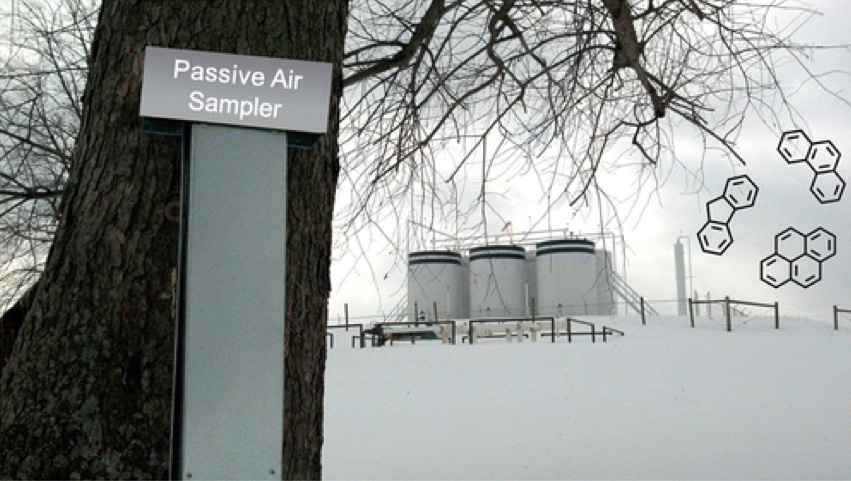 People living or working near active natural gas wells may be exposed to toxic air pollution at higher levels than the Environmental Protection Agency considers safe for lifetime exposure. That's the conclusion of a new study performed by scientists from Oregon State University and the University of Cincinnati, published in the March 26th edition of the journal Environmental Science and Technology.
People living or working near active natural gas wells may be exposed to toxic air pollution at higher levels than the Environmental Protection Agency considers safe for lifetime exposure. That's the conclusion of a new study performed by scientists from Oregon State University and the University of Cincinnati, published in the March 26th edition of the journal Environmental Science and Technology.
Sampling at various sites adjacent or downwind of fracking wells in Carroll County, Ohio over a three-week period last February revolved around 62 Polycyclic Aromatic Hydrocarbons (PAHs), a category of combustion-produced pollutants already linked too everything from childhood obesity to breast cancer, to lower IQ. Carroll County sits on top of the Utica formation, a gas rich shale deposit. The rural county is a hotspot of natural gas drilling and production, with more than one active well site per square mile.
“Air pollution from fracking operations may pose an under-recognized health hazard to people living near them,” said the study’s coauthor Kim Anderson, an environmental chemist with OSU’s College of Agricultural Sciences.
The study was initiated by citizens in the area who wanted to more about the health risks they were facing from fracking. They approached Anderson her peers and and the scientist designed the study to include citizen participation. They placed air samplers on the properties of 23 volunteers living or working at sites ranging from immediately next to a gas well to a little more than three miles away.
Anderson's samplers are aluminum T-shaped boxes containing specially treated polyethylene ribbons that absorb contaminants in a similar manner to biological cells. Volunteers were trained in proper handling of samplers and documenting of data.After the study period, the volunteers packaged the samplers in airtight bags, labeled them and mailed them back to Anderson’s lab at OSU.
Even the lowest levels – detected on sites more than a mile away from a well – were higher than previous researchers had found in downtown Chicago and near a Belgian oil refinery. They were about 10 times higher than in a rural Michigan area with no natural gas wells.
By looking at the ratios of individual PAHs detected by the samplers, Anderson and her team were able to discern whether they came directly from the earth – a “petrogenic” source – or from “pyrogenic” sources like the burning of fossil fuels. The proportion of petrogenic PAHs in the mix was highest nearer the wells and decreased with distance.
The team also accounted for the influences of wood smoke and vehicle exhaust, common sources of airborne pyrogenic PAHs. Wood smoke was consistent across the sampling area, supporting the conclusion that the gas wells were contributing to the higher PAH levels.
The researchers then used a standard calculation to determine the additional cancer risk posed by airborne contaminants over a range of scenarios. For the worst-case scenario (exposure 24 hours a day over 25 years), they found that a person anywhere in the study area would be exposed at a risk level exceeding the threshold of what the EPA deems acceptable.
The highest-risk areas were those nearest the wells, Anderson said. Areas more than a mile away posed about 30 percent less risk.
Estimated worst-case maximum residential exposure was 2.9 in 10 000, which is above the U.S. EPA’s acceptable risk level of one in a million. According to the study's abstract, "This work suggests that natural gas extraction may be contributing significantly to PAHs in air, at levels that are relevant to human health."
Ready to Fight Back and Win? Downwinders is about to launch its most ambitious campaign in years
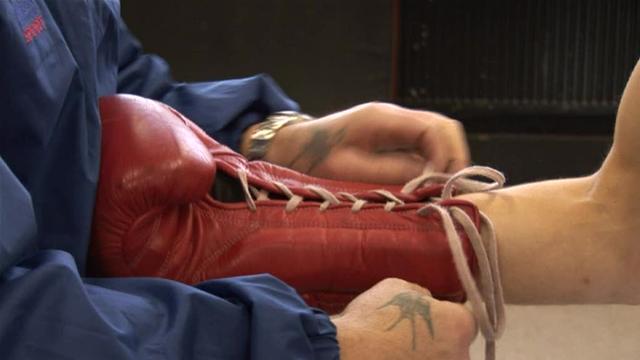
Mercifully, the 2015 Texas Legislative Session is almost over. Since January we've seen cities stripped of their traditional zoning power over oil and gas facilities, citizens' ability to challenge new pollution permits further suppressed, and renewable energy sources singled-out for financial punishment.
But the circus leaves town on June 1, and shortly after that Downwinders at Risk will be gearing up for the largest clean air campaign we've taken on since our fight against hazardous waste burning in the Midlothian cement kilns.
It'll begin with the mid-summer release of the results of a years-in-the-making project that turns the tables on the recent trend to transfer all pollution decisions from local governments to Austin. For the first time, city and county officials in North Texas will have the power to do what, up until now, only state agencies could do.
We don't want to give away too much too soon, but this is by far the single most costly project we've ever sought funding for, and it will have an impact on every major industrial source of pollution affecting Dallas-Fort Worth air quality – the cement kilns, the oil and gas industry and the obsolete East and Central Texas coal plants. And It's being done in a way that makes its results unimpeachable by a hostile state government and industry.
As a kind of sneak peak, below is a small sample of what we're talking about. It's a map of our half of Texas with the DFW metropolitan area outlined in black near the top. It shows the reach and intensity of smog pollution from the five coal plants closest to us. Even though they're 90 to over 100 miles away, they're still able to raise smog levels in central DFW by 4 to 8 parts per billion or more – a huge amount that could make or break our compliance with the Clean Air Act.
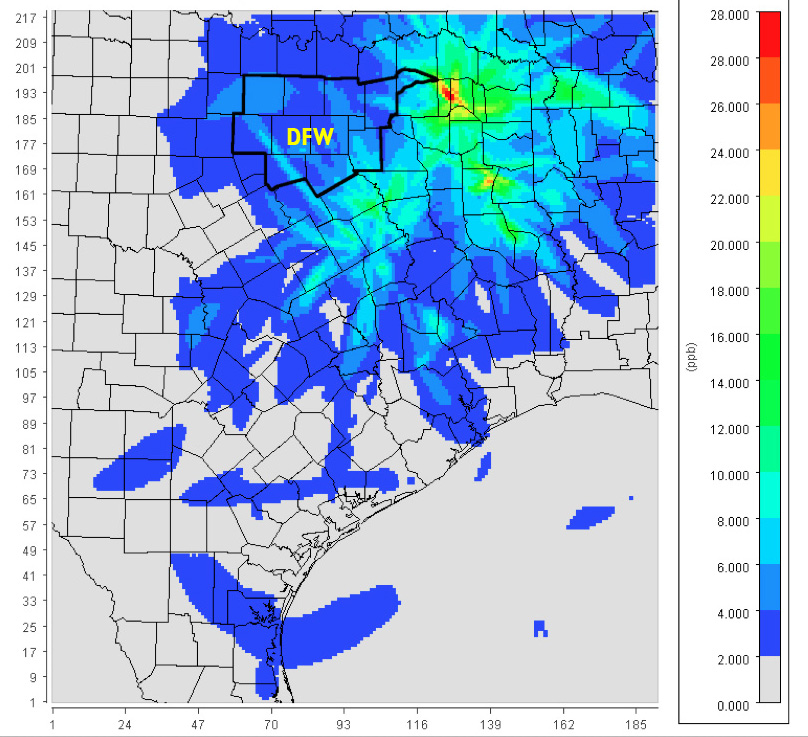 This is a map the Texas Commission on Environmental Quality has the ability to produce, but refuses to. Now, we have the same ability. And we can aim it at any large industrial source of pollution in the region. And we have.
This is a map the Texas Commission on Environmental Quality has the ability to produce, but refuses to. Now, we have the same ability. And we can aim it at any large industrial source of pollution in the region. And we have.
Moreover, the results of our study are being released in tandem with an associated project by Dr. Robert Haley and the University of Texas – Southwestern Medial Center. Together, they'll represent the opening salvos to a sustained, multi-organizational campaign to address DFW's chronic bad air problems.
Armed with this new evidence and having identified some chinks in the armor of the Status Quo, we see a chance to strike a powerful blow for cleaner air and citizen power. We see a chance to win a significant victory. We don't know about you, but after the last five months, we could sure use some victories.
That's not to say winning will come easy. It's still Texas. But we hope you'll agree that one of they keys to our long track record of success is picking the battles and the battlefields that give us better odds.
Every dollar you give goes to fight
for cleaner air right here in N. Texas
Happy 2015 Ozone Season!
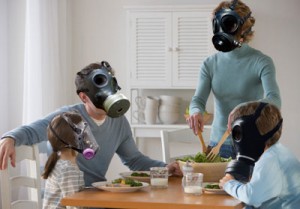 No sooner had the Lung Association's annual "State of the Air" report been released on Wednesday than DFW promptly lived down to its reputation for bad air with its first Ozone Action Days and "exceedences" of the national smog standard of 75 parts per billion on Thursday and Friday.
No sooner had the Lung Association's annual "State of the Air" report been released on Wednesday than DFW promptly lived down to its reputation for bad air with its first Ozone Action Days and "exceedences" of the national smog standard of 75 parts per billion on Thursday and Friday.
Thursday saw 8-hour averages of 79 ppb at the North Dallas monitor and 82 ppb at the Rockwall site. For three hours in the late afternoon that day the ozone levels in Rockwall were exceeding the old 1997 smog standard of 85 ppb and went as high as 97 ppb. In North Dallas, smog was also at 85 ppb or above for three hours and got as high as 90 ppb.
Friday' problems were more widespread but not as intense. Five different monitoring sites exceeded the current 75 ppb standard, and the pattern of exceedences were more traditional. That is, the highest-reading monitors on Friday were the ones that traditionally produce the highest numbers every year. Keller and Grapevine averaged 76 ppb, Denton and Eagle Mountain Lake average 77 ppb, and Parker County averaged 79, seeing a peak of 82 in early afternoon.
In all, as of Friday evening, seven out of the 20 DFW smog monitors had their first official excedence of the current 75 ppb standard. As veteran observers know, it takes four such exceedences to qualify as an official violation of the standard. That is, each monitoring site is allowed to exceed the standard three separate days before the fourth-highest day is counted as a violation. This methodology ends up masking the severity of a region's smog problem, but it's been used for over two decades now and so is the EPA's measuring stick of choice.
Since it's only May, there's lots of time for one or more sites to accumulate four or more days over 75 ppb. What will be interesting to see this year is how many, if any, end up with 4th highest readings above the 1997 85 ppb standard – a level of compliance we had not been able to meet until last year's cooler and wetter summer.
For those of you who want to keep score at home, here are the relevant, if not all together public-friendly links:
For tracking the four highest ozone levels recorded at all 20 DFW ozone monitors.
For tracking 8-hour average ozone levels at all 20 DFW monitors by day and month
For tracking ozone levels in real time during the day at all 20 DFW monitors (This site sets-up with a statewide graphic. Click any white square with a number in it in the DFW area and you'll get a closer view of the North Texas region and monitors. For tracking any monitor's ozone levels hour-by-hour for any day, use the same technique but then click on the monitor on the North Texas map you want to examine more closely and the specific data for that day at that monitor will come up. To change the day you want to look at hour-by-hour, change the month and/or day in the slots above the "parameters" chart.)
Hovering over all these numbers is one more – the prospect of a new national smog standard by the end of the year. This is the one that was at the center of the EPA's national hearing in Arlington this last January. Although EPA's own panel of scientists has recommended a level of 60-65 ppb, most pundits believe it will end up between 65 and 70 ppb. So when you see officials boasting about lower ozone levels in DFW, keep in mind that the medical consensus is that the current 75 ppb standard set by the Bush administration is still too high to protect public health.
What’s worse than DFW air being bad? The news coverage of it being bad.
 Another year, another "F" from the American Lung Association's "State of the Air" report. This week saw the release of the annual study, which ranks air quality across the US, and has given DFW a failing grade for its dirty air every year, beginning in 1999 when the first one was published.
Another year, another "F" from the American Lung Association's "State of the Air" report. This week saw the release of the annual study, which ranks air quality across the US, and has given DFW a failing grade for its dirty air every year, beginning in 1999 when the first one was published.
Since passage of the amendments to the Clean Air Act establishing national health-based standards for ozone, or smog, in 1991, North Texas has never had safe or legal air, and usually ends up in the list of ten worst bad air cities in the country. This year was no exception, when the Metromess came in at #7, relying on numbers from 2011 to 2013.
Yes the levels of smog have mercifully come down over the last 15 years. But so have the levels that are considered by public health experts to be "safe." And while other metropolitan areas of equal size have shown faster, deeper improvements in air quality, DFW has lagged behind.
But many of you already know that. What was most disappointing about the ALA report was not its conclusions concerning our air, but the coverage of those conclusions in the local media, which was almost invisible, exceeded in its inconspicuousness only by the lack of context in what little mention there was.
By our count only the Dallas Morning News and its television partner Channel 5 even had stories about the report. In the DMN, it was left up to Jack-of-all-trades reporter Robert Wilonsky to write the short blub (490 words, or less than the guest op-ed limit of 650 words imposed by the paper's editorial pages) in a blog post, while KXAS clocked in with a relatively long piece over just over 2 minutes that featured an interview with Downwinders at Risk board member Cherelle Blazer and her asthmatic son.
A decade ago, this report would have been a bigger story. Some of that missing coverage is due to bad air fatigue by local news editors – "This just in, DFW air still sucks, details at 10" – but a lot of it's due to the entire category of environmental beat reporters that no longer exists. Not that long ago, both papers had full-time environmental reporters, as did most of the network TV affiliates. Not now.
The Star-Telegram newsroom is shrinking faster than a Greenland glacier and keeps shedding reporters with an environmental portfolio at a rate of about one per year. At this point it's not even possible to name a newsroom employee to whom you could pitch an anti-pollution story. The Morning News has an environmental reporter in name, but Randy Lee Loftis has been away from the beat for years, instead doing mostly work as an editor and dropping in only for occasional pieces. Stories about earthquakes and fracking were recently covered by science reporter Anna Kuchment, while other pieces about fracking itself were written in the business section by James Osburn. Wilonsky's Wednesday's article about the ALA report was in the "Life and Arts" section of the DMN's website.
Don Wall used to be the Channel 8 environmental reporter. Channel 4 had one too. But now these stores are rotated out to those who may or may not have any background in environmental reporting at all.
That's bad news because the less familiar they are with the subject matter, the more likely a reporter is to fall for the smooth Party Line from government or industry, rather than having seen for themselves that the official explanation has big holes. Anyone who's in the news business knows that the best stories are broken and covered by those with the best sources and understanding of what they're talking about. You need to know the context, the series of dominos that's falling or will fall around this piece, as part of a longer, larger narrative. A beat reporter who's been covering the issue and knows all the players without a program.
In the case of air quality and the ALA report, there's simply no one around to remind the public that this report covers the exact years the last "clean air plan" submitted by the Texas Commission on Environmental Quality was supposed to give us historical low levels of smog – despite not requiring any new controls on any sources of air pollution. Instead, smog got worse, the first time a plan has actually produced higher levels of ozone at its conclusion than when it began.
And that's important in 2015 because the same state agency is once again submitting a clean air plan that does nothing but wait for the federal government to act. No new controls on the cement kilns, the coal plants , or the gas industry. As a result, EPA's own computer modeling shows DFW is predicted to be only one of four areas in the country still out of compliance with the current smog standard in 2018.
As Paul Harvey used to say, that's the rest of the story – the really important part. The part that keeps the annual "DFW has bad air" piece from being just another update from an asthmatic child about a problem that seemingly has no solution and no end. There wasn't one mention of the do-nothing TCEQ plan(s), or the important industrial sources of pollution that keep getting a pass in either the DMN or Channel 5 pieces. Instead, smog is treated apolitically, as if it was an inevitable force of nature.
In fact, there's a reason why we keep getting F's in these reports. There's a reason why DFW air got worse between 2011 and 2013. It's because the State of Texas, with co-facilitation from EPA, wasn't doing anything to actively promote cleaner air. And now it's doing the same thing again.
Smog doesn't happen just because we have really hot days. It happens because there's an unresponsive system in place. It happens because of the politics of smog. Politics that people can change. That's a story that an environmental beat reporter who had covered the last five years of local air quality planning could tell. But instead you have to read it in a small non-profit's blog.
Poll: Public Support for Local Control of Fracking is Strong, Will Have No Impact on Texas Legislature
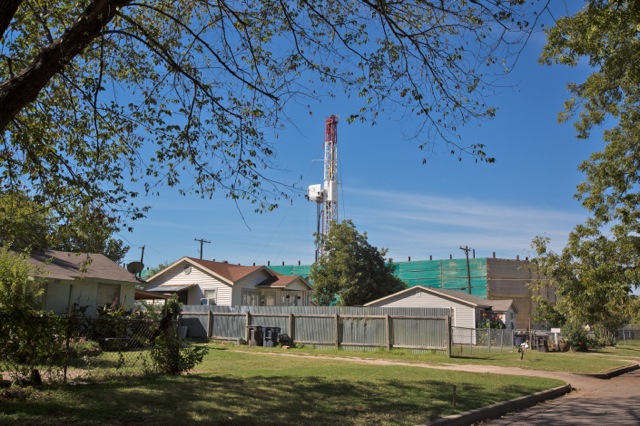
From the Too Little Too Late Department comes news that a new UT poll finds that 53% of Texans want cities to have the power to control where fracking takes place in their jurisdictions, even to the point of banning it, a la Denton. That number rises to 58% nationally. The poll surveyed 2,078 people from March 4th -13th from across the country and has a margin of error of 3 percentage points.
Considering that legislation to restrict that right sailed through the Texas House of Representatives by a vote of 118 to 22 and is on a fast track to be approved by the Texas Senate any day now, the poll's results should have exactly zero impact. Because 53% of Texan didn't get sizable campaign contributions from the oil and gas industry but about that same percentage of the Texas Legislature did.
“Normal Levels” of Air Pollution Increase Risk of Dementia
 Supporters who saw us out and about for Earth Day events could come by the table and pick up a new flyer of ours that cites at least four recent studies linking dirty air to Autism and other developmental disorders in children.
Supporters who saw us out and about for Earth Day events could come by the table and pick up a new flyer of ours that cites at least four recent studies linking dirty air to Autism and other developmental disorders in children.
Now comes a study that suggests the other end of the age spectrum is also adversely affected by the same phenomenon – that the brains of middle aged and older adults are subject to accelerated aging from exposure to "normal levels" of particulate matter (PM) air pollution in cities.
Writing in the May issue of "Stroke," researchers with the Cardiovascular Epidemiology Research Unit of Beth Israel Deaconess Medical Center in Boston described the results of a long term study of more than 943 men and women at least 60 years old and free of dementia and stroke histories. Those subjects living near "major roads" and exposed to "normal pollution levels" suffered cerebral shrinkage, ageing their brains by the equivalent of one year, and increasing their dementia risk. Small increases in particulate matter (PM) air pollution – an increase of only two microgram per cubic meter of air was sufficient to increase the risks.
"Exposure to elevated levels of PM2.5 was associated with smaller total cerebral brain volume, a marker of age-associated brain atrophy, and with higher odds of covert brain infarcts. These findings suggest that air pollution is associated with insidious effects on structural brain aging even in dementia- and stroke-free persons. "
Researchers said the exact causality was unclear, but that it might be that inflammation as a result of the deposit of fine particles in the lungs resulted in the increase in risk.
PM pollution is microscopic particles of soot – 1000th of the width of a human hair – emitted by combustion of all types: gasoline and diesel engines in vehicles, as well as boilers and furnaces in cement kilns, power plants and flares. PM 2. 5 refers to the size of the particle – at least 2.5 microns or smaller. The larger the road, the more traffic, the more internal combustion engines pass by releasing their PM pollution. Other studies – including the ones on our Autism flyers – have found a relationship between proximity to roads and brain disorders in children.
Professor of Neurology Dr Sudha Seshadri at Boston University School of Medicine said: "On average participants who lived in more polluted areas had the brain volume of someone a year older than participants who lived in less polluted areas." They also had a 46 per cent higher risk of silent strokes. "This is concerning since we know that silent strokes increase the risk of overt strokes and of developing dementia, walking problems and depression.”
Last year researchers suggested that commuters could cut their air pollution intake in half simply by using the side streets in major cities rather than main roads.
Dr Rossa Brugha, a paediatrician and pollution researcher at Queen Mary, University of London, said walkers and runners can make small adjustments to their route which could have major benefits on their health.
With the growing body of evidence that proximity to heavy traffic is detrimental to public health, the siting of new housing and schools should also be impacted by urban planners and developers, as well as give momentum to those who want to re-examine the need for large highway projects in densely-populated areas.
Green Ambivalence Over Another Clinton Presidency
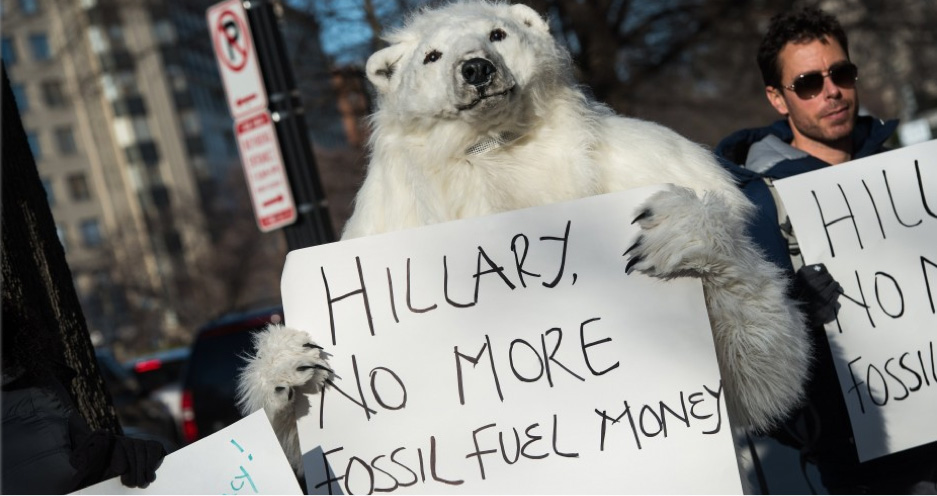 For those among us who were fighting the good fight in the 1990's, the prospect of a Hillary Clinton presidency is met with some trepidation.
For those among us who were fighting the good fight in the 1990's, the prospect of a Hillary Clinton presidency is met with some trepidation.
It's not just that Bill's terms were filled with more promises of change than the actual thing (see WTI incinerator). Or revisiting triangulation as a political strategy with its unsatisfying half-measures. Or the fact that Hillary's time as a corporate lawyer for the most powerful interests in Arkansas resulted in all kinds of of conflict of interest, odd bedfellow situations for a "progressive," including being a member of the the board of the LaFarge Corporation when they began to switch from coal and gas as a fuel for their cement kilns to hazardous waste.
No, it's the knowledge that a certain just-good-enough ambivalent green rhetoric will be applied for public consumption to spin a script where all the actors and actions will already have been decided in advance to serve a larger political goal that you can only guess at and will have no chance of influencing. The first Clinton Administration was a good example of the old adage, that for environmentalists, the real difference between Democrats and Republicans is that you get more meetings with Democrats. There were lots and lots of meetings for those eight years, full of sound and fury, signifying almost nothing.
Say what you will about President Obama, but because his 2008 victory was at the expense of a lot of the Party machinery that had backed Clinton in the primaries, his ascendance allowed for more room for non-elites to influence decisions up and down the line. Nothing illustrates that better than the appointment of Al Armendariz, an unassuming apolitical professor of engineering for most of his life, as the Region 6 EPA Regional Administrator by the equally unlikely choice of Lisa Jackson as EPA head. For a brief shining moment, the choice of grassroots environmentalists was taken seriously. Instead of party hack or corporate "environmental lawyer" you had a real practicing environmental engineer directing policy in what is arguably the most important EPA region in the country.
That's unlikely to happen in a Hillary Clinton administration. Instead of an Al Armendariz, look for a Ron Kirk or equally entrenched local Democratic Party establishment figure. It's just the milieu that she, and her advisors, feels more comfortable in.
With the anti-science faction of the Republican Party in control of both the House and Senate, there's no question that such a choice is preferable to one made by a Republican President Rubio or Bush. But like anyone else, environmentalists would like to vote for someone instead of voting against their opponent out of fear of the alternative scenario.
A recent National Journal piece surveys the careful dance already starting between the candidate and national environmental groups:
The groups want firm, on-the-record commitments from Clinton, hoping to hold her to green promises later in the campaign and, should she win, as the next president.
So far, they've gotten few explicit guarantees. Clinton has famously declined to say what she thinks of Keystone, and in the run-up to her announcement, she has said little about other environmental issues as well. Indeed, Clinton has kept largely quiet on most policy issues, save for the occasional Twitter post or statement. But for environmental groups looking for a Democrat to champion causes they're sure Republicans won't, the lack of explicit policy guarantees is worrisome.
"Clinton has got to tell us what she stands for," said Bill Snape, a senior counsel with the Center for Biological Diversity. "If we're going to be asked to trust her, then she has to verify where she stands. That's all we're asking, and she hasn't yet delivered."
The moves are part of a delicate, codependent relationship between the candidate and the environmental movement.
Green groups need Clinton (or any other Democrat) to beat the eventual GOP nominee, lest they find themselves with a president totally at odds with their stances. But they can't afford to offer unconditional support for fear that the candidate will not prioritize their issues amid the sea of Democratic causes.
There's no doubt where all of this is headed. The groups will come around because they have no choice. Clinton will concede some popular positions that she can afford to take. But the lack of a strong primary opponent this time will give her lots of wiggle room.
We're still more than a year and a half away from election day, but Clinton fatigue is already setting-in among a lot of older environmentalists. Get those PowerPoints ready.
Not A Surprise: Pollution Reduction Helps Low Income Populations
 One of the most insincere and transparent memes polluters use these days is their sudden concern for the incomes fo poor folks if government forces them to reduce their pollution (we're looking at you Energy In Depth's Steve Everley). "If you make it harder for us to release our crap (into mostly low-income neighborhoods), energy costs and the prices of consumer goods will increase, taking money out of the pockets of people who need it most."
One of the most insincere and transparent memes polluters use these days is their sudden concern for the incomes fo poor folks if government forces them to reduce their pollution (we're looking at you Energy In Depth's Steve Everley). "If you make it harder for us to release our crap (into mostly low-income neighborhoods), energy costs and the prices of consumer goods will increase, taking money out of the pockets of people who need it most."
Ignoring the fact that none of these entities are working on behalf of the poor when they're not making this argument, a new study takes on that argument at face value, and finds, not surprisingly, that it's wrong.
Cutting greenhouse-gas pollution will mean cleaner air and cheaper electricity, according to a Natural Resources Defense Council report that offers a defense of the Obama Administration's Clean Power Plan, the goal of which is to reduce that pollution by 30% by 2030.
In this scenario, it's the owners of obsolete and dirty coal plants that are making the case that making them cut back on planet-wrecking pollution would cause their facilities to close down or add costly controls, resulting in the loss of jobs and higher electirc bills.
But according to the EPA, the initiative will actually cut electric bills by 8 percent and the NRDC study concludes it will create as many as 274,00 jobs in energy-efficiency projects, not to mention new renewable energy positions.
NRDC's numbers show that the country is at a tipping point now where the costs of efficiency and renewables are cheaper to tap into than traditional fossil fuel power sources. It notes the operator of the nation’s largest power grid, "PJM Interconnection" found that generating 30 percent of the electricity in its region from renewable energy sources could save consumers up to 30 percent on their bills.
That conclusion echoes the 2013 report by Daniel Cohan, released by the Dallas County Medical Society in its unsuccessful bid to petition the Texas Commission on Environmental Quality to close Luminant's three older East Texas coal plans. It found that when the costs of becoming a modern Clean Air Act-abiding facility was factored in, the per kilowatt rate of electricity from those dirty coal plants made renewables like wind and solar competitive, and efficiency cheaper outright.
Our energy menu is now much bigger than "nukes or coal." One of the bright spots of the early 21st Century is that we're living in an age when non-fossil fuel alternatives really are a viable market force, in part, because they can not only help reduce the pollution in our air, but also take less of a bite out of our monthly budgets. And for those among us who spend a larger percentage of their budget on basic needs like heating and cooling, this is good, green news.
Earth Day 2015. Texas. Winter is Here.

For fans of the HBO blockbuster "Game of Thrones," the familiar Stark family motto that "Winter is coming" is both a warning and a call for for constant vigilance. Even when things look good, the Wheel of Fortune is turning. And so it has turned a very large degree for environmentalists these past six months in Texas. It may look like Spring outside, but Winter isn't coming. It's already here. Happy Earth Day!
Fighting the good fight in Texas has almost always meant fighting behind enemy lines. There were never any illusions about what a steep climb it was to win even the most modest victories. But this latest state legislative session has stripped us of our last electoral defenses at the precise moment in history where our elected opponents have become their most numerous and shameless. The White Walkers are on the move.
Legislation preventing cities from carrying out basic zoning responsibilities when it comes to the operations of oil and gas facilities in their midst is only part of a much larger tsunami of misanthropic measures on their way to being passed by June. An already citizen-unfriendly process for awarding new pollution permits will be made even more restrictive, the power of cities to sue polluters will be clipped, incentives for cleaner energy that have made Texas a national leader in wind power will be wiped away, ethical watchdogs will be neutered.
This moment was years in the making, beginning with Tom Delay's unprecedented off-Census stacking-the-deck redistricting of the Statehouse in 2003, to last year's resignation of Wendy Davis from the State Senate and any hope of holding back the flood with that body's "two-thirds rule" that had been the stop-gap of last resort since at least the beginning of this decade.
It is instructive, if not comforting, to insert the maxim here that you should never try to fight your battles on the opponent's turf. And these days the Texas Capitol is the capital of our enemies' turf. It is HQ, Mission Control, the Home Office of every large polluting industry that citizens are fighting. What lobbyists cannot persude millions of citizens or whole cities to do, they can tell 181 legislators to do because they bought and paid for them.
Nothing makes this clearer than the recent Texans for Public Justice report on the percentage of Oil and Gas money collected by members of the Texas legislators in the 2013-14 cycle. State Senator Troy Frazer, the sponsor of the HB 40's Senate twin, received almost 20% of his entire campaign chests from the industry. Cause and effect.
Some of our supporters might have wondered why we haven't joined the chorus of those urging you to send letters or e-mails or make phone calls to Austin about this or that horrible bill, particularly the anti-local control ones. There are at least a couple of reasons. One is that most of you are already getting that chorus of requests and one more from us will likely not be read or headed. Another is that we're a relatively small group with no Austin presence and can't really add anything to the fight being headed up by the usual suspects.
But to be honest there's another reason, and that is it was clear the "no local control" train was going to run over anything and anyone who got in front of it. From the fast-tracking it got from both House and Senate leaders, and the bi-partisan support it got in committee, the signs were unmistakable that no amount of citizen protest in Austin was going to stop it. For us, it just isn't a very strategic expenditure of our limited resources. We do more good by staying in DFW and concentrating on the things we can change than shuttling back and forth to Austin to try and stop the things we can't. Weeks ago we did put out feelers to try and organize protests at the district offices of HB 40's DFW sponsors – but could find no willing partners.
And that lack of holding the sponsors accountable underscores the weakness of not just fracking opponents, but Texas environmentalists in general. A lot of us may feel uncomfortable talking about what this Lege session reveals, but we're going to have to face up and work through our feebleness in order to do better the next time, and the time after that. For just as this moment was years in the making, so it will be years in the undoing.
First, we are alone. There is no party that represents our interests when push comes to shove. Only individuals. There are 55 Democrats in the Texas House of Representatives. The vote in favor of HB 40 was 118 to 22. Most Democrats in Austin are unable or unwilling to make principled stands on behalf of environmental causes. There was, and will be, no inspiring filibuster against HB 40 as there was last session for abortion rights.
Likewise in past decades, less cynical Republicans might have thought twice before taking away local zoning. This year only Tam Parker of Flower Mound, a city which went through its own fracking fight and ended up with one of the most protective ordinances in the state, was the lone Representative that bolted from his GOP peers.
For all practical purposes, Texas is a a one-party state. Redistricting will keep it that way for at least the rest of this decade. If you want a different legislature, you should be voting for different Republicans. That means a lot of people who never thought about voting in the Republican Party primary should be doing so from here on out. Only people power can defeat the millions being poured by industry into Texas state races. If you don't want to fail after-the-fact in April in Austin, you need to be showing up in May primary elections out in the hinterlands.
Second, we still can't bring ourselves to express appropriate outrage when we're getting screwed. There will be no noisy, rowdy rotunda-filling demonstrations against HB 40. Instead, the best the movement could manage was a vigil the night before the overwhelming defeat in the House. A vigil in this circumstance is more like a wake. Where are the sit-ins, the angry interruptions from the Gallery, or even the pie-throwing – the peaceful but forceful expressions of outrage that occur when you have nothing left to lose? Yes, there were hundreds of citizens who made the trip down to Austin to testify against HB 40, but then most turned around and left even before hearings began on its Senate counterpart the very next day, as that version of the bill sailed out of committee.
Until sponsors of HB 40 and other nefarious bills are held directly accountable, until there is a personal price to be paid for supporting such legislation, there is no disincentive to stop voting for such bills. The ultimate accountability is at the voting booth, but you can help that process along by isolating the bad guys. There was hardly any of that save some valiant efforts to confront Phil King, whose own piece of local control legislation now looks like a great bargain.
We're fragmented. This is especially true of the fracking opponents, but it's also true of the environmental movement of Texas as a whole. Decentralization is sometimes great, especially at the local level, but when you're confronting a well-organized, well-funded coordinated opposition with a script, it has its limitations. And we're seeing them this session. There is no Statewide or even regional organization of fracking opponents. There is no full time staff presence in Austin representing those getting shat-on in the Eagle Ford or the Barnett Shale. There is only a small cabal of overwhelmed Austin-based staffers who have to take on the task of defeating all the bad bills as well as wrangling the good ones through. They do an admirable job of improvising once the threat becomes clear, but their bi-annual make-shift triage makes a MASH field unit look like a choreographed ballet in comparison.
In years past, this process could exploit the two-thirds rule in the Senate, or find enough moderates from each side in the House to keep the really bad stuff from happening. There is no such backstop anymore. We have to find better ways to anticipate, plan and lead during a crisis.
What to do before the promised demographic calvary arrives and Red Texas magically tranforms into Blue California?
Exploit the loopholes the new laws give you or remain silent on. What is state of the art noise, dust and traffic control for fracking sites? Don't those RRC maps show horizontal drilling up to half a mile or more away from the rig itself? Isn't that a "commercially reasonable distance?" Can't both rigs and compressors be electric? Despite not changing its setbacks, Mansfield just passed a provision that says developers have to warn potential homeowners about the proximity of nearby wells. Let's make that a bigger and better Right-to-Know rule that applies everywhere in the Barnett.
It will take years for legislation as intentioanlly vague as HB 40 to work itself out in the courts. Meanwhile, like a river flows around a boulder, so must citizens find ways to work around the new restrictions and keep moving.
Take a more regional perspective. In a state as large as Texas, it's practically impossible for grassroots groups to coordinate themselves statewide. But we're not even coordinated in the same region, represented by some of the same elected officials. As an example, fracking opponents never came together to focus on the DFW air quality process this last year the way they could have to force a regional perspective on the air pollution issues caused by their separate bad actors. Fracking will never impact the majority of Texans, but in a place like DFW, you can show how it keeps the area in its smoggy status quo. You increase your constituency for change and make policy respond across whole metropolitan areas rather than city-by-city. The same thing is playing out in San Antonio and Austin. What you can't get directly by talking about the local toxic threat, maybe you can get by talking about the contribution to county line-crossing smog.
Come together to pressure EPA. It's time the Agency did its job better in the places where it's clear state government is trying its best to avoid following both the letter and spirit of the nation's environmental laws. There is not much hope of turning Austin around in the short-term, but the national EPA is supposed to be meeting a higher standard and Texas environmentalists should be using the Agency's own regulations and rhetoric as cudgels. Just like Civil Rights have had to be enforced in a enhanced and robust way south of the Mason-Dixon line, so will the Clean Air Act have to be administered differently in places like Texas.
Too often, the EPA has to be sued by citizens to get it to follow its own dictates. Too often the decision is made in DC to get along with a rebellious state agency that doesn't even believe smog is bad for you. We have to show that is no longer an acceptable option. EPA Region 6 headquarters should be a staging ground for protests by Texas residents who have no place else to turn. We need to lean on the feds in direct proportion to the state's leaning on us.
As it's done for most of its 20 years, Downwinders will do its best to advance the cause in DFW despite a hostile state government. We promise to push the envelope and be opportunistic. We promise to work in ways that try to outflank, outsmart, and outlive our opponents in government and industry. We promise to keep lighting fires under the feet of those who need to do more, but don't or won't. And if you want, feel free to come over and warm yourself or even add some kindling. Winter is here, and it's staying cold for a long time.
